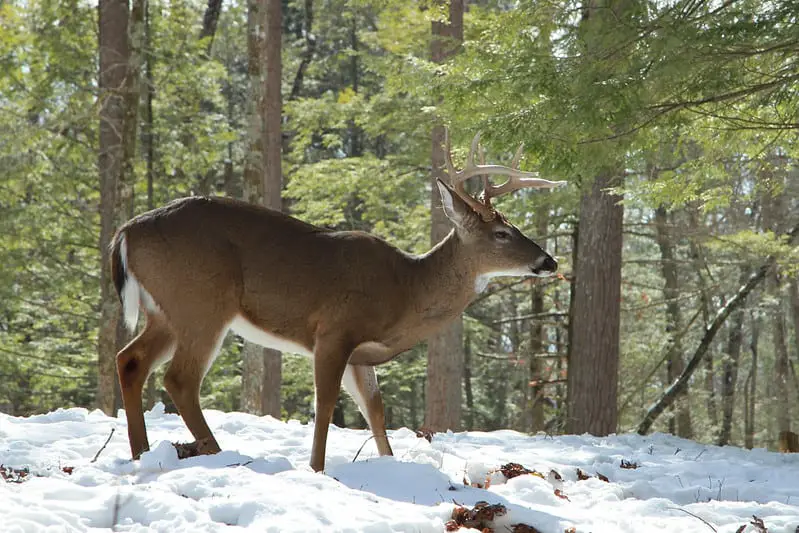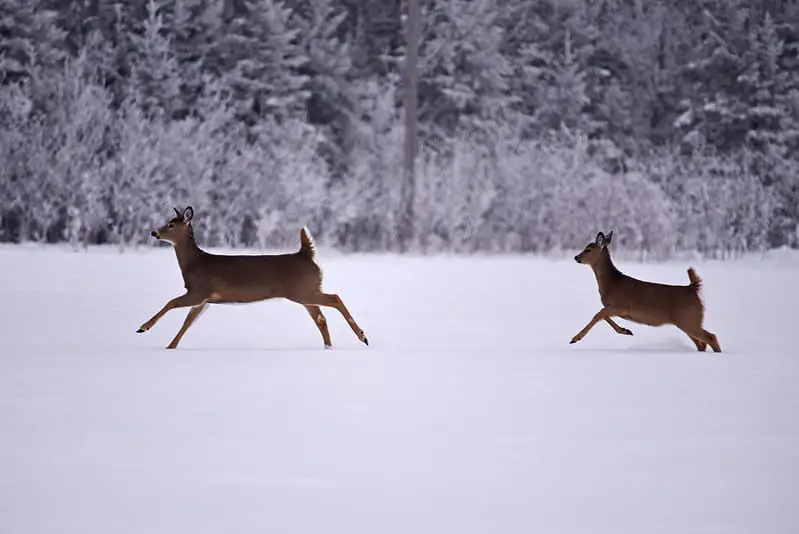Knowing what the best hours for hunting deer are can help you have a successful hunt. Even experienced, successful hunters will admit that deer hunting involves luck. You can scout, spend days at the range, buy the most expensive clothing, and still be sitting in an empty stand at noon, sorting through your lunchbox.
You significantly improve your odds when you understand that deer move more frequently and for longer distances during certain hours of the day. When you combine that knowledge with how other environmental factors alter those hours, you bankrupt the deer hunting casino and take a prized buck.
Related: Tips for deer food plotting.

Related: Is deer hunting in the rain worth it?
The best hours for hunting deer.
From November to February, male deer activity peaks from 7 to 9 a.m. and from 5 to 7 p.m. Male deer greatly reduce their activity and travel distances from 12 to 3 p.m., with noon being the hour of least action. During the winter months, male deer are also more active at night than during the day.
The hour of lowest daytime activity (noon) is fascinating. Many deer hunters claim this is the best hour to remain on the stand. These hunters believe many others give up around lunchtime and kick up deer as they tramp back to their vehicles. That some hunters have had success using this trick just proves that there’s always some deer moving around at every hour.
Bucks tend to stick to this pattern, except during the rut. The search for does during the day, adding hours and mileage to a buck’s daily activity. What rutting bucks are not known to do is explore new territories while searching for a mate. During the rut, a buck will be more active and travel greater distances, but he’s simply patrolling his established home range for a passing and available doe.
This is excellent news for the deer hunter who has scouted and located a buck just before the rut. That hunter has three advantages:
- The buck is now committed to remaining in the area during the rut.
- It will increase its daylight hours of activity, rather than use nocturnal hours to search.
- As the buck begins to patrol its home range more frequently and thoroughly–the odds of a successful encounter with the buck increase.
Related: What’s the best wind speed for deer hunting?

How can the weather affect deer hunting times?
According to researchers, only snow depth and temperature have any real effect on deer activity levels.
Just before a snowstorm, deer movement will sharply increase as they seek out a food source, fill their bellies, and prepare to hunker down for an unknown period. If the storm delivers several feet of snow, the deer will become much less active and slow their metabolism. During a blizzard or just after a tremendous snowfall, deer activity will be zero.
Extremely low temperatures during the winter deer season can make bucks move around a lot more. The colder temperatures also require more foraging and searches for windbreaks to avoid the sub-zero windchills.
Related: The best place to shoot a deer.
Even if you can go out during the best hours for deer hunting, get out there as often as you can and whenever you can. Many a buck works late!


